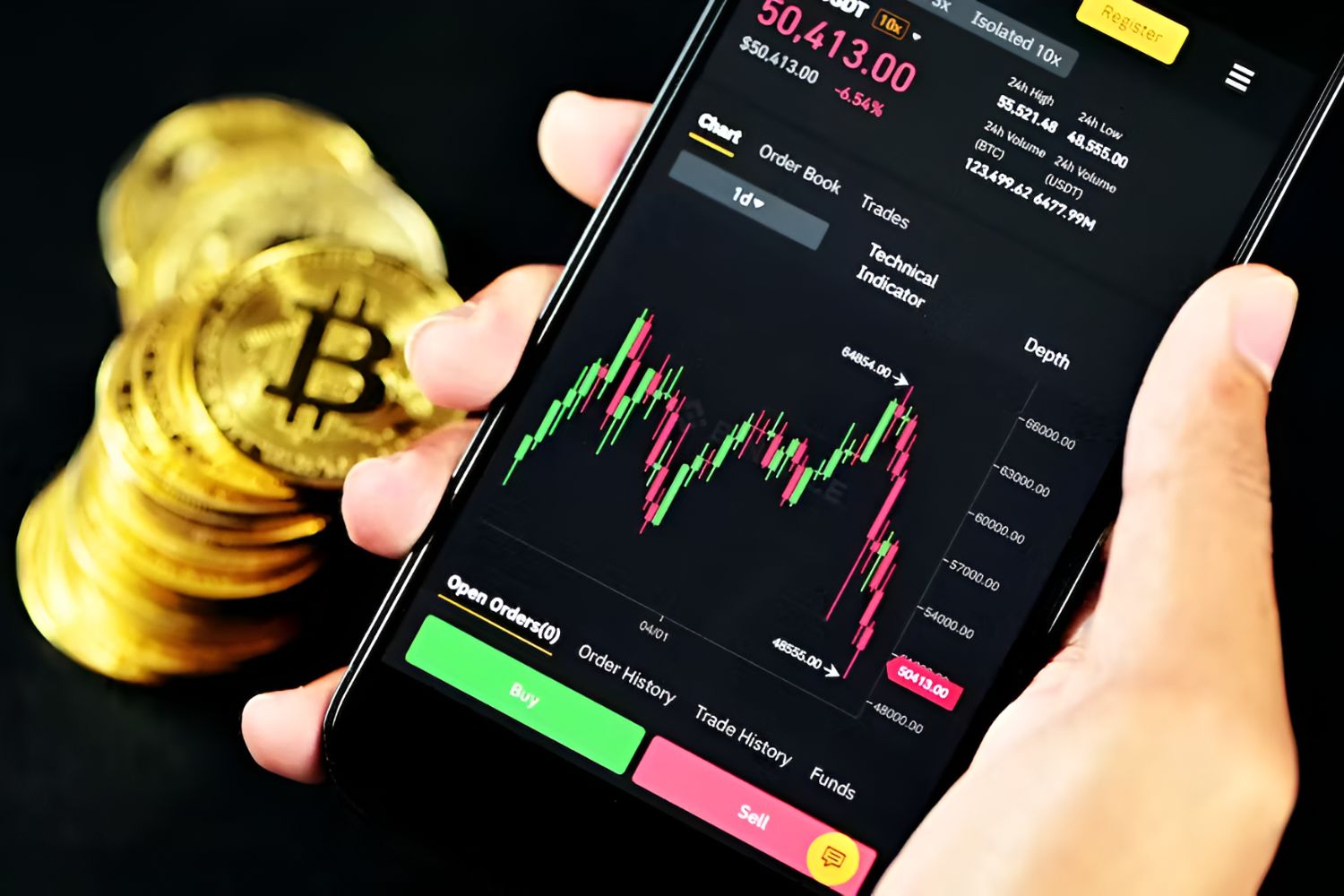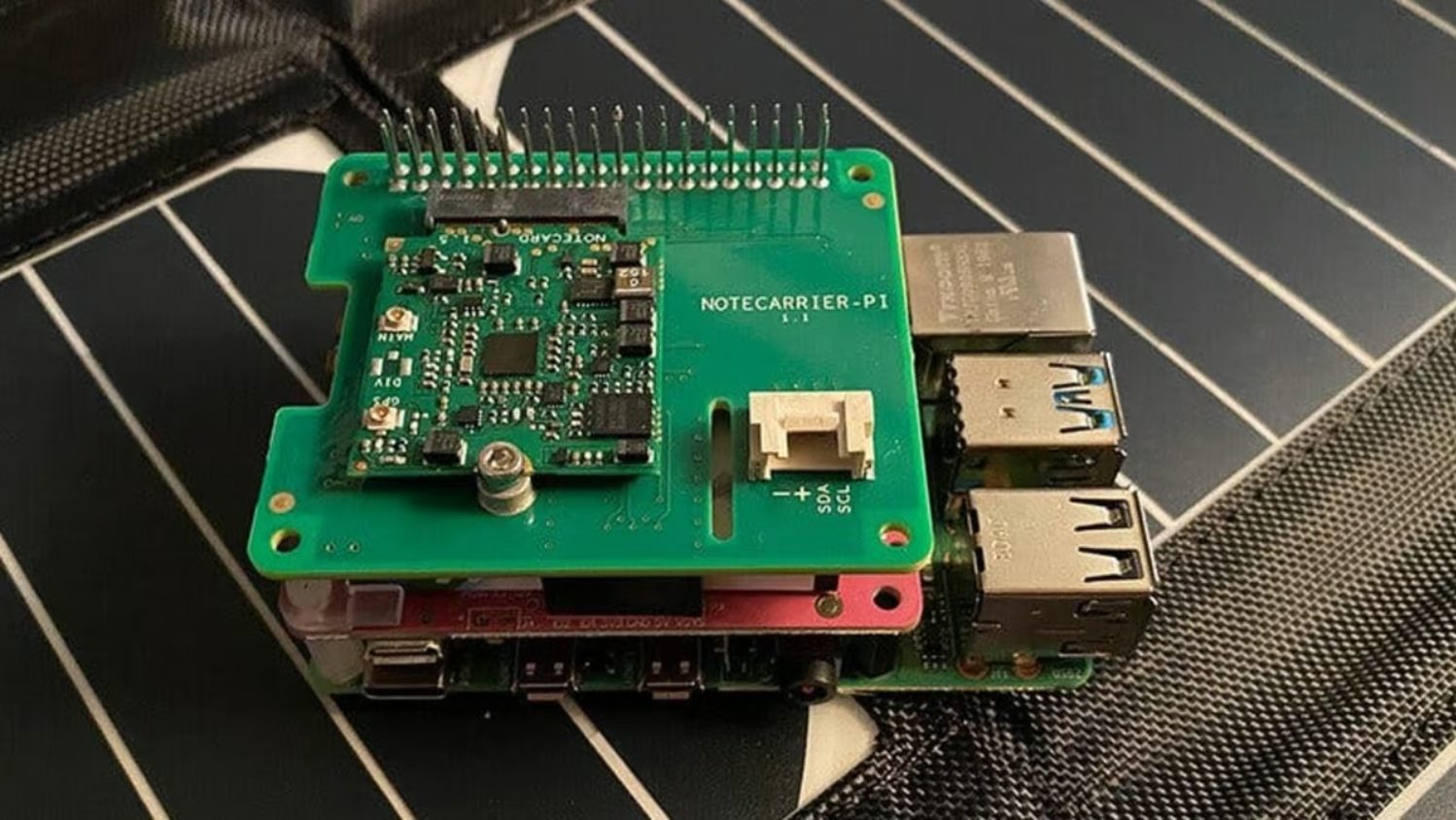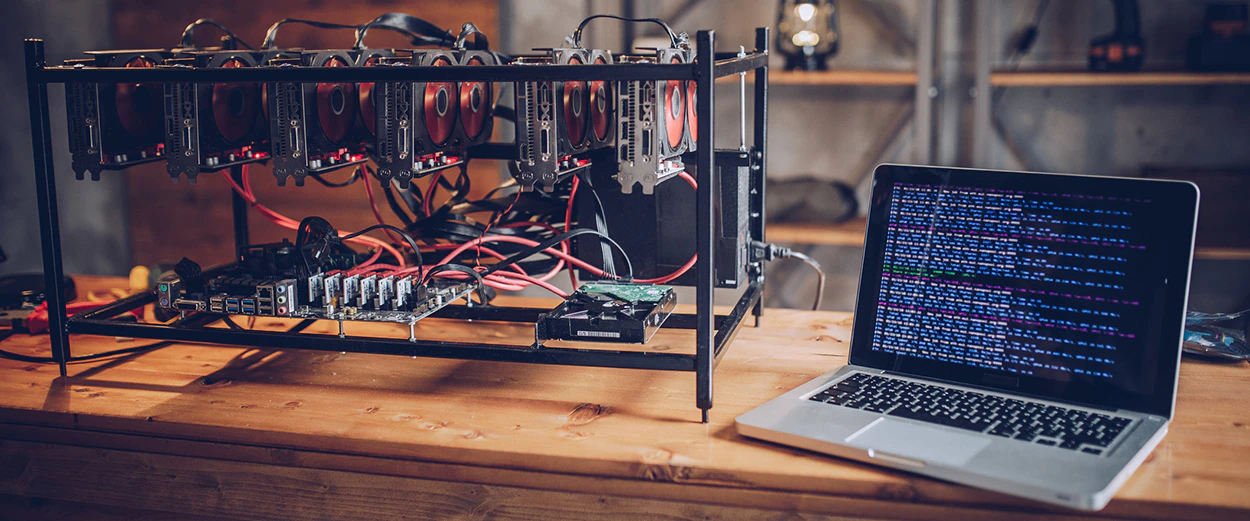Introduction
Welcome to the world of Bitcoin, the revolutionary digital currency that has taken the financial industry by storm. In this article, we will delve into the fundamentals of Bitcoin and guide you on how to get started with this exciting technology.
Bitcoin, created in 2009 by an anonymous person or group of people using the pseudonym Satoshi Nakamoto, was the first decentralized cryptocurrency. Unlike traditional currencies that are controlled by governments or financial institutions, Bitcoin operates on a peer-to-peer network, allowing users to send and receive payments directly without the need for intermediaries.
Over the years, Bitcoin has gained popularity due to its potential for financial freedom, security, and low transaction fees. It has also attracted attention from investors and individuals seeking to diversify their portfolios and benefit from the increasing value of cryptocurrencies.
However, before diving headfirst into the world of Bitcoin, it is crucial to understand how it works and how you can get started. In the following sections, we will explore the key aspects of Bitcoin, including acquiring a Bitcoin wallet, buying Bitcoin, and safeguarding your digital assets.
Whether you are a beginner looking to dip your toes into the cryptocurrency world or an experienced investor seeking to expand your portfolio, this guide will provide you with the essential knowledge and tools to navigate the exciting world of Bitcoin.
What is Bitcoin?
Bitcoin is a decentralized digital currency that allows individuals to send and receive payments directly without the need for intermediaries such as banks or payment processors. It was the first cryptocurrency to be created and remains the most well-known and widely used.
At its core, Bitcoin is based on a technology called blockchain. The blockchain is a distributed ledger that records all transactions made with Bitcoin. This ledger is maintained and verified by a network of computers, known as nodes, that collaborate to ensure the accuracy and security of the transactions.
Unlike traditional currencies issued by central banks, Bitcoin is not backed by any physical assets or government regulations. Instead, it derives its value from the trust and demand of users who are willing to accept it as a means of exchange.
Bitcoin operates on a deflationary model, which means that there is a limited supply of coins. The total number of Bitcoins that can ever be created is capped at 21 million, ensuring scarcity and potential value appreciation over time.
One of the key features of Bitcoin is its pseudonymous nature. While transactions are recorded on the blockchain, the identities of the parties involved are not directly linked to their public addresses. Instead, users are identified by a unique alphanumeric address, which provides a certain level of privacy.
Bitcoin also offers fast and low-cost transactions compared to traditional banking systems. Transactions can be processed within minutes, regardless of the geographical location of the parties involved. Additionally, Bitcoin transactions typically incur lower fees compared to traditional payment methods, making it an attractive option for cross-border transactions and remittances.
Overall, Bitcoin introduces a new paradigm of digital currency that challenges the existing financial system. By leveraging the power of blockchain technology, it offers a decentralized and secure method of transferring value, allowing individuals to have full control over their finances without relying on intermediaries.
In the next sections, we will explore how to get started with Bitcoin, including acquiring a Bitcoin wallet, buying Bitcoin, and securing your digital assets.
How Does Bitcoin Work?
Bitcoin operates on a technology called blockchain, which is a decentralized and transparent ledger that records all transactions made with Bitcoin. This blockchain is maintained and verified by a network of computers, known as nodes, that collaborate to ensure the accuracy and security of the transactions.
When a Bitcoin transaction occurs, it is added to a “block” of transactions. Each block contains a unique identifier, a timestamp, and a reference to the previous block, forming a chain of blocks that makes up the blockchain. This structure ensures that transactions are immutable and cannot be altered once they are recorded.
To secure the transactions and prevent fraudulent activity, Bitcoin uses cryptographic algorithms. Each transaction is verified by miners, who compete to solve computational puzzles to validate the block of transactions. This process, known as mining, requires substantial computational power and energy.
Once a block is validated, it is added to the blockchain, and the transactions within that block are considered confirmed. This confirmation process adds an additional layer of security to the Bitcoin network, making it difficult for malicious actors to manipulate the transaction history or double-spend their Bitcoin.
Bitcoin ownership is represented by cryptographic keys. Each individual who wants to interact with Bitcoin receives a pair of keys: a public key and a private key. The public key is the address that others can use to send Bitcoin to the owner, while the private key is kept secret and is used to sign transactions as proof of ownership.
When a user wants to send Bitcoin to another address, they create a transaction message, sign it with their private key, and broadcast it to the network. The miners then verify the authenticity of the transaction and add it to the next block in the blockchain.
Bitcoin transactions are designed to be pseudonymous, as users are identified by their public addresses rather than their personal information. However, it is worth noting that while transactions are pseudonymous, they are still recorded on a public blockchain, allowing anyone to view the transaction history and trace the flow of funds.
Overall, Bitcoin works by utilizing blockchain technology to enable secure and decentralized transactions. It leverages cryptographic algorithms and mining to ensure the integrity of the network and prevent fraud. By understanding the underlying mechanics of Bitcoin, you can better appreciate its potential and navigate the world of cryptocurrencies with confidence.
Getting a Bitcoin Wallet
Before you can start using Bitcoin, you will need a Bitcoin wallet to securely store your digital assets. A Bitcoin wallet is a software application or a physical device that allows you to store, send, and receive Bitcoin.
There are several types of Bitcoin wallets available, each with its own advantages and security features. Let’s explore the most common types:
1. Software Wallets: These are applications that you can install on your computer or smartphone. They offer convenience and easy access to your Bitcoin. Examples of popular software wallets include Electrum, Exodus, and Mycelium.
2. Online Wallets: Also known as web wallets, these wallets are accessible through a web browser. They are usually provided by cryptocurrency exchanges or online wallet service providers. While online wallets offer convenience, they can be less secure than other types of wallets, as they rely on the security measures of the service provider.
3. Hardware Wallets: These wallets use physical devices, such as USB sticks, to store your Bitcoin securely. Hardware wallets are considered to be one of the most secure options, as they keep your private keys offline and protect them from malware and hacking attempts. Popular hardware wallets include Ledger and Trezor.
4. Paper Wallets: A paper wallet is a physical printout or a handwritten document that contains your Bitcoin address and private key. It offers an offline way to store your Bitcoin, but it is important to keep the paper wallet secure from physical damage or loss.
When choosing a Bitcoin wallet, it is important to consider factors such as security, ease of use, and the level of control you have over your private keys. It is recommended to do thorough research and choose a reputable wallet that meets your specific needs.
Once you have selected a wallet, the next step is to set it up. This typically involves creating a new wallet, generating a unique Bitcoin address, and backing up your private keys. It is crucial to follow the instructions provided by the wallet provider to ensure the security of your Bitcoin.
It is worth noting that you can have multiple Bitcoin wallets to suit different purposes. For example, you can have a software wallet on your smartphone for everyday transactions and a hardware wallet for long-term storage of large amounts of Bitcoin.
Getting a Bitcoin wallet is an essential step in your journey to using Bitcoin. It provides you with a secure place to store your digital assets and gives you the ability to send and receive Bitcoin with ease. Choose a wallet that aligns with your security preferences and start exploring the world of Bitcoin with confidence.
Buying Bitcoin
Once you have set up your Bitcoin wallet, the next step is to acquire some Bitcoin. There are several methods you can use to buy Bitcoin, depending on your location, preferences, and the availability of cryptocurrency exchanges in your country.
Here are some common ways to buy Bitcoin:
1. Cryptocurrency Exchanges: These online platforms facilitate the buying and selling of cryptocurrencies, including Bitcoin. You can create an account on a reputable cryptocurrency exchange, complete the necessary verification process, and deposit funds into your account. Once your account is funded, you can place buy orders for Bitcoin using fiat currency or other cryptocurrencies available on the exchange.
2. Peer-to-Peer (P2P) Trading: P2P trading platforms connect buyers and sellers directly, allowing them to trade Bitcoin without the involvement of an intermediary. These platforms provide a secure escrow service to facilitate the transaction and protect the parties involved. P2P trading offers flexibility in terms of payment methods and can be a suitable option for those seeking privacy and anonymity.
3. Bitcoin ATMs: Bitcoin ATMs are physical machines where you can buy Bitcoin using cash or debit/credit cards. These machines function similarly to regular ATMs, but instead of dispensing cash, they transfer Bitcoin to your wallet. Bitcoin ATMs are usually found in major cities and provide a convenient way to buy Bitcoin quickly.
4. OTC (Over-the-Counter) Markets: OTC markets allow large-scale traders and institutions to buy Bitcoin directly from sellers outside of traditional exchanges. OTC trading provides liquidity for large orders and offers more personalized services. However, OTC trading is primarily aimed at institutional investors and may not be accessible to individual retail investors.
When buying Bitcoin, it is important to consider factors such as the exchange’s reputation, security measures, fees, and the ease of use of their platform. It is recommended to do thorough research and choose a reputable exchange or trading platform that meets your specific requirements.
After purchasing Bitcoin, it is advisable to transfer the funds to your personal wallet rather than keeping them on the exchange. By doing so, you have full control of your private keys and are not reliant on the security measures of the exchange.
Keep in mind that the price of Bitcoin can be volatile, and it is subject to fluctuations in the market. It is essential to stay informed about the cryptocurrency market and make informed decisions when buying Bitcoin.
By following the appropriate steps and using reputable platforms, you can easily buy Bitcoin and start participating in the exciting world of cryptocurrencies. Remember to only invest what you can afford to lose and take necessary measures to secure your digital assets.
Storing Bitcoin Safely
When it comes to Bitcoin, securing your digital assets is of utmost importance. As a decentralized and digital currency, Bitcoin is susceptible to theft, hacking attempts, and loss if not stored properly. Therefore, it is crucial to take necessary precautions to ensure the safety of your Bitcoin holdings.
Here are some essential tips for storing Bitcoin safely:
1. Choose a Secure Wallet: As mentioned earlier, selecting a secure Bitcoin wallet is the first step in safeguarding your Bitcoin. Opt for a reputable wallet provider that offers strong security features and has a proven track record of protecting user funds. Hardware wallets, such as Ledger and Trezor, are often considered the most secure options as they store your private keys offline.
2. Use Two-Factor Authentication (2FA): Enable two-factor authentication on your Bitcoin wallet and any associated accounts, such as exchanges or trading platforms. 2FA adds an extra layer of security by requiring a second verification step, usually through a mobile app or SMS code, before allowing access to your account.
3. Keep Your Private Keys Offline: Your private keys are the most critical piece of information when it comes to accessing and transferring your Bitcoin. Store your private keys securely offline, preferably in a hardware wallet or in a paper wallet stored in a safe place. Avoid sharing your private keys with others and be wary of phishing attempts.
4. Regularly Backup Your Wallet: Backup your wallet regularly to ensure that you have a copy of your private keys and can recover your Bitcoin in case of loss or damage to your primary wallet. Store your backups in multiple secure locations, such as encrypted cloud storage or external hard drives.
5. Stay Updated with Software Updates: Keep your Bitcoin wallet software and any associated applications up to date with the latest security patches. Software updates often include bug fixes and security enhancements that can protect against potential vulnerabilities.
6. Be Cautious of Phishing and Malware Attacks: Be vigilant when it comes to online security. Be cautious of phishing attempts, where malicious actors try to trick you into revealing your private keys or login credentials. Make sure to verify the authenticity of websites and avoid clicking on suspicious links or downloading unknown files.
7. Diversify Your Storage: Consider diversifying your storage by using multiple wallets and backup options. This can help mitigate the risk of losing all your Bitcoin in case one storage method fails or is compromised.
Remember that securing your Bitcoin is ultimately your responsibility. By following these best practices and staying informed about the latest security measures, you can significantly reduce the risk of losing your digital assets to theft or hacking attempts.
It is recommended to periodically review and update your security measures to adapt to evolving threats. Stay informed about the latest security practices and take proactive steps to protect your Bitcoin investments.
Sending and Receiving Bitcoin
One of the key advantages of using Bitcoin is the ability to send and receive digital currency quickly and efficiently. Whether you want to pay for goods and services or transfer funds to friends or family, understanding how to send and receive Bitcoin is essential.
Here is a step-by-step guide on how to send and receive Bitcoin:
Sending Bitcoin:
- Open your Bitcoin wallet and ensure that you have sufficient funds available.
- Click on the “Send” or “Transfer” option within your wallet interface.
- Enter the recipient’s Bitcoin address. Make sure to double-check the address to avoid any mistakes.
- Specify the amount of Bitcoin you want to send. Some wallets allow you to input the amount in your local currency, which will be converted to Bitcoin automatically.
- Review the transaction details, including the recipient address and the amount, to ensure accuracy.
- If your wallet supports it, set the transaction fee. Higher fees generally result in faster confirmation of the transaction, but they can also increase the cost of the transaction.
- Once you have reviewed and confirmed the transaction details, click on the “Send” button to initiate the transfer.
- Wait for the transaction to be confirmed by the network. Depending on the network congestion and the fee you set, the confirmation process can take a few minutes to several hours.
Receiving Bitcoin:
- Share your Bitcoin address with the person or entity from whom you are expecting to receive Bitcoin. The address is usually found in the “Receive” or “Wallet” section of your wallet interface.
- Ensure that you are providing the correct address and that it corresponds to the currency you want to receive.
- Once the sender initiates the transaction, you will receive a notification in your wallet confirming the incoming transaction.
- Wait for the transaction to be confirmed by the network. This confirmation process typically takes a few minutes, but it can vary depending on the network congestion.
- Once the transaction is confirmed, the Bitcoin will be credited to your wallet balance, and you can use it as desired.
It is important to note that while Bitcoin transactions are typically fast, the confirmation time can vary depending on network congestion. In some cases, it may take longer for a transaction to be confirmed, especially if the network is experiencing high demand.
When sending and receiving Bitcoin, always double-check the recipient’s address to avoid any potential mistakes or loss of funds. Bitcoin transactions are irreversible, meaning that once a transaction is confirmed, it cannot be reversed or canceled.
By understanding the process of sending and receiving Bitcoin, you can conveniently manage your digital currency transactions and enjoy the benefits of a peer-to-peer decentralized payment system.
Making Transactions with Bitcoin
Bitcoin has gained popularity as a digital currency that allows individuals to make transactions in a decentralized and secure manner. Making transactions with Bitcoin is straightforward and offers several advantages compared to traditional payment methods. Here’s what you need to know about making transactions with Bitcoin:
1. Peer-to-Peer Transactions:
Bitcoin transactions are peer-to-peer, meaning they occur directly between the sender and the recipient without the need for intermediaries. This eliminates the need for banks or payment processors, reducing transaction fees and increasing the speed of transactions.
2. Choosing the Right Wallet:
To make transactions with Bitcoin, you’ll need a Bitcoin wallet, as mentioned earlier. Ensure that you have a reliable and secure wallet to store your Bitcoin and facilitate transactions.
3. Bitcoin Addresses:
To initiate a transaction, you’ll need the recipient’s unique Bitcoin address. The recipient will provide you with their address, which you’ll enter as the destination for the transaction.
4. Transaction Amount:
Specify the amount of Bitcoin you want to send. Some wallets allow you to input the amount in your local currency, which will then be converted to Bitcoin automatically based on the prevailing exchange rate.
5. Transaction Fee:
When making a Bitcoin transaction, you’ll have the option to set the transaction fee. The fee you choose determines the priority of your transaction. Higher fees typically result in faster confirmation times, especially during periods of high network congestion.
6. Confirmation and Blockchain:
After initiating a transaction, it is added to a block in the blockchain. Miners verify the transaction by solving complex mathematical puzzles, ensuring its validity. Once confirmed, the transaction cannot be reversed or modified.
7. Confirmation Time:
Bitcoin transactions typically require multiple confirmations from miners before being considered final. The number of confirmations required depends on the exchange or service you’re using. Each confirmation adds another layer of security to the transaction.
8. Network Congestion:
During periods of high network congestion, such as during significant market fluctuations, transaction confirmations may take longer. It’s important to be patient and allow the network to process your transaction.
9. Privacy Considerations:
While Bitcoin transactions are pseudo-anonymous, they are recorded on the public blockchain, allowing anyone to view transaction details. To enhance privacy, some wallets offer additional features like coin mixing or utilizing privacy-focused cryptocurrencies.
10. Be Careful and Verify:
When making Bitcoin transactions, always double-check the recipient’s address. Bitcoin transactions are irreversible, and sending funds to the wrong address can result in permanent loss.
With the simplicity and convenience of making transactions with Bitcoin, you can enjoy the benefits of a decentralized and efficient payment system. By following best practices and staying mindful of security measures, you can confidently engage in transactions using this innovative digital currency.
Understanding Bitcoin Mining
Bitcoin mining plays a vital role in the operation and security of the Bitcoin network. It is the process by which new Bitcoins are created and transactions are verified and added to the blockchain. Understanding how Bitcoin mining works is essential to comprehending the inner workings of this decentralized digital currency.
1. Mining Basics:
Bitcoin mining involves solving complex mathematical puzzles to validate and confirm transactions on the network. Miners compete with each other to solve these puzzles, and the first miner to find a solution is rewarded with newly created Bitcoins.
2. The Purpose of Mining:
Mining serves two primary purposes: transaction verification and the creation of new Bitcoin. Miners ensure the integrity of transactions by confirming their validity and adding them to the blockchain. It also serves as a decentralized mechanism to issue new Bitcoin into circulation, preventing counterfeit or unauthorized creation of coins.
3. Mining Hardware:
Bitcoin mining requires specialized hardware, known as ASICs (Application-Specific Integrated Circuits), which are designed specifically for mining purposes. These powerful machines are capable of performing the complex calculations required to mine Bitcoin much more efficiently than regular CPUs or GPUs.
4. Mining Pools:
Due to the high competition and the increased difficulty of mining, individual miners often choose to join mining pools. Mining pools are groups of miners who combine their computational power and share the rewards amongst themselves based on their contributions.
5. Difficulty Adjustment:
The difficulty of mining is adjusted regularly to maintain a consistent time interval between block confirmations. This adjustment is based on the total computational power of the network. If more miners join the network or new, more powerful mining hardware is introduced, the difficulty increases to ensure that blocks are not mined too quickly.
6. Block Rewards:
Miners are rewarded with a certain number of newly minted Bitcoins, known as the block reward, for successfully mining a block. Currently, the block reward is 6.25 Bitcoins, but this reward is halved approximately every four years in an event called the “halving.” The halving is programmed to occur every 210,000 blocks to control the inflation rate of Bitcoin.
7. Transaction Fees:
In addition to the block reward, miners also earn transaction fees for including transactions in a block. Users can voluntarily attach a fee to their transactions to incentivize miners to prioritize their transactions. As the block reward decreases over time, transaction fees are expected to become the primary source of compensation for miners.
8. Energy Consumption:
Bitcoin mining requires a significant amount of computational power, which consumes a substantial amount of electricity. This has led to concerns about the environmental impact of mining and the need for more sustainable mining practices.
By participating in the mining process, miners contribute to the security and decentralization of the Bitcoin network. They ensure the integrity of transactions and sustain the ongoing operation of the cryptocurrency. Understanding the fundamentals of Bitcoin mining allows for a deeper appreciation of the underlying technology and the importance it holds within the world of cryptocurrencies.
Protecting Your Bitcoin
As a decentralized digital currency, protecting your Bitcoin is crucial to ensure the safety and security of your digital assets. Bitcoin’s pseudonymous and irreversible nature makes it an attractive target for hackers and scammers. Here are some essential tips to help you protect your Bitcoin:
1. Secure Your Wallet:
Choose a reputable and secure Bitcoin wallet to store your digital assets. Use wallets that offer advanced security features, such as multi-factor authentication (2FA) and encryption. Keep your wallet software and devices updated with the latest security patches.
2. Backup Your Wallet:
Regularly backup your wallet and store the backups securely in multiple locations. This ensures that you can recover your Bitcoin in case of device failure or loss. Consider using encrypted cloud storage or offline storage mediums like external hard drives or USBs.
3. Use Strong Passwords:
Choose a strong and unique password for your Bitcoin wallet to prevent unauthorized access. Avoid using easily guessable passwords, and consider using a password manager to securely store your passwords.
4. Enable Two-Factor Authentication (2FA):
Enable 2FA whenever possible to add an extra layer of security to your Bitcoin wallet. This requires a second verification step, such as a unique code sent to your mobile device, in addition to your password. It significantly reduces the risk of unauthorized access to your wallet.
5. Beware of Phishing Attempts:
Be cautious of phishing attempts, where scammers pose as legitimate entities to trick you into revealing your private keys or login credentials. Always verify the authenticity of websites and avoid clicking on suspicious links or downloading unknown files.
6. Keep Your Private Keys Offline:
Store your private keys offline in hardware wallets or paper wallets. Keeping your private keys offline reduces the risk of them being exposed to online threats. Be cautious of malicious software or keyloggers that can capture your private keys if entered on compromised devices.
7. Keep a Low Profile:
Avoid sharing your Bitcoin holdings and transactions publicly, as it can make you a potential target for hackers. Be mindful of how much personal information you disclose online and use pseudonymous addresses when possible.
8. Stay Informed:
Keep up to date with the latest security practices and news related to Bitcoin. Follow reputable sources, participate in forums or communities, and engage with the Bitcoin community to stay informed about potential security threats and best practices.
9. Diversify Your Investments:
Avoid putting all your Bitcoin holdings in one wallet or exchange. Diversify your investments by using multiple wallets and storing Bitcoin in different locations. This reduces the risk of losing all your funds in case of a single security breach.
10. Trustworthy Exchanges and Services:
If you use cryptocurrency exchanges or other Bitcoin-related services, choose reputable and trustworthy platforms that prioritize security. Research the exchange’s security practices, history of past incidents, and user reviews before entrusting them with your Bitcoin.
By implementing these security measures and staying vigilant, you can significantly reduce the risk of losing your Bitcoin to theft, scams, or technical failures. Being proactive in protecting your Bitcoin is essential in the digital era, where online threats are prevalent.
Conclusion
Bitcoin has revolutionized the world of finance and given individuals the power to control their financial transactions like never before. Understanding the fundamentals of Bitcoin, from its decentralized nature to the intricacies of mining, is essential for anyone looking to get involved in the world of cryptocurrencies.
In this article, we have explored the basics of Bitcoin, including what it is and how it works. We have also discussed the importance of acquiring a secure Bitcoin wallet and the various options available for buying, storing, and protecting Bitcoin.
By following best practices and security measures, such as choosing reputable wallets, using strong passwords and encryption, and staying informed about the latest security threats, you can ensure the safety of your Bitcoin holdings.
Bitcoin offers exciting possibilities, from convenient peer-to-peer transactions to the potential for financial freedom. However, it’s important to approach Bitcoin with caution and make informed decisions. Stay updated on market trends, research potential investments, and be mindful of the risks involved.
Remember, the world of Bitcoin and cryptocurrencies is still evolving. Stay curious, keep learning, and adapt to the ever-changing landscape. Engage with the community, participate in discussions, and explore new opportunities as they arise.
With a strong understanding of Bitcoin’s fundamentals and a commitment to security and responsible investing, you can confidently navigate the world of cryptocurrencies and potentially benefit from this transformative technology.

























